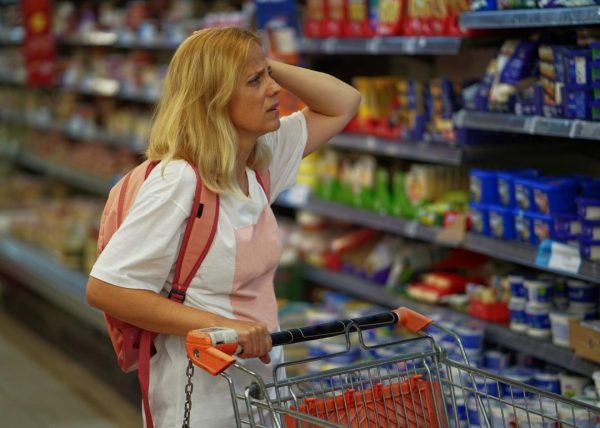Even prior to the public health and economic disruptions wrought by the COVID-19 pandemic, roughly 1 in 10 American households was experiencing food insecurity. Now with grocery store prices continuing to surge in the aftermath, some metros are seeing more success in lowering insecurity than others.
After relatively flat prices for most of the last 40 years, soaring costs at grocery stores and restaurants have changed American consumer behaviors — and, in some cases, exacerbated food insecurity.
Link2Feed analyzed Census Bureau data to illustrate the change in the number of people struggling to feed their households in a given week as inflation remains at historically high levels. This analysis includes the 10 most populous metropolitan areas in the country.
Every week around 1 in 10 Americans opens their pantry and fails to find enough food to satisfy their hunger. It’s a persistent problem Americans have faced, and it impacts some communities more than others.
Food insecurity particularly affects households with children, individuals with disabilities who might lack transportation or regular employment, low-income households who struggle to afford food and Black communities who have had fewer opportunities to build wealth due to systemic racism in the labor market, and who are more likely to live in areas that lack nearby grocery stores.
Black families in the U.S. are twice as likely as white families to experience food insecurity. In 2022 around 1 in 3 Black children lived in food insecure households, according to the Department of Agriculture’s Economic Research Service.
Food insecurity is caused by a lack of affordable food options in communities and is heavily linked to poverty and financial insecurity. Communities without a full-service grocery store are more likely to turn to convenience stores, gas stations and dollar stores where food can actually be more expensive and which often carry less nutritious food choices. Studies show that low-income households spend less in real dollars on food than upper-income households, yet that amount makes up a disproportionate share of their income.
What’s more, a lack of nutritious food options around the house can lead to worse health outcomes including a higher chance of developing asthma in children as well as obesity and cardiovascular disease.
Sky-high inflation — driven by massive swings in demand for goods and services as well as supply chain disruptions — has added more financial hurdles for food-insecure individuals. Since the Federal Reserve hiked interest rates to keep inflation in check, everyday Americans are contending with higher expenses when borrowing money for things like vehicles and homes or to pay off high-interest credit card debt.
But polls indicate the majority of Americans are experiencing the impact of inflation most acutely not through higher interest rates, but in their grocery store bills. In a November 2023 poll by Yahoo Finance and Ipsos, 2 in 3 Americans polled said that food price inflation was hitting them hardest compared to other expenses.
Those rising food prices can make it harder for communities that already struggle to access nutritious food. Nationwide, food insecurity rose year over year from 10.2% in 2021 to 12.8% in 2022, according to the USDA.

Food insecurity in many large cities dipped in 2021 following stimulus payments before peaking in 2022
As economic activity picked back up in 2021 following mass layoffs and strict regulations on businesses meant to stem the spread of COVID-19, prices began to increase at historic rates. Between 2019 and 2023, prices for food rose a whopping 25%, outpacing the rising cost of housing, health care and items like clothing.
By the summer of 2022, inflation was reaching its peak. Miami was among the 10 most populous metro areas that saw the largest spikes in food insecurity over the time period analyzed, particularly in 2022. Today it sits at a lower rate than in 2020.
Houston stands out as having the highest food insecurity rate at nearly 16% of residents in April of this year. Cities in Texas were among the hardest hit in the country by inflation.
Other metros have seen their rates drop below 2020 levels. In the Dallas-Fort Worth and Los Angeles metros, food insecurity has come down from levels recorded in August of the first year of the pandemic, when aid organizations were scrambling to meet the needs of an underemployed population reeling from a historically deep recession earlier in the year.
Written by Dom DiFurio. Story editing by Alizah Salario. Copy editing by Tim Bruns.
This story originally appeared on Link2Feed and was produced and distributed in partnership with Stacker Studio. The article was copy edited from its original version
Re-published with CC BY-NC 4.0 License.









